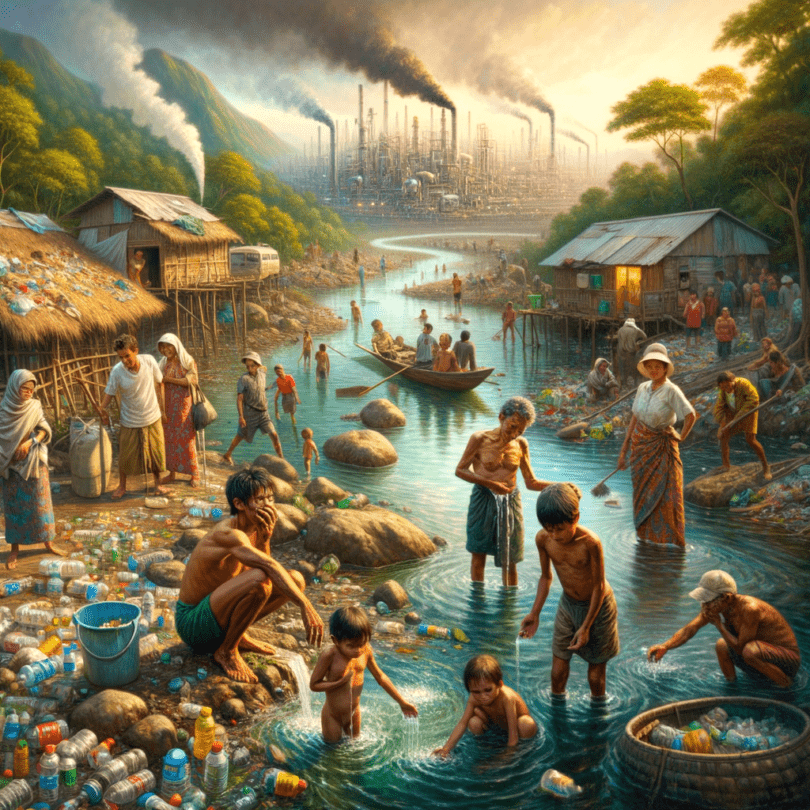You know, there are moments when seemingly ordinary things become anything but. Water, for instance—it’s the simplest, most essential part of our lives, right? We tend to forget its sheer significance until suddenly, its comforting touch turns into a threat. Funny how this friend, that’s always been by your side, can suddenly feel like an enemy.
I remember once flipping through a newspaper and stumbling upon an article about a little village (don’t ask me the name, my memory blanked on it) where every glass of water was like playing Russian roulette. The water was contaminated, and the people were getting sick. I felt a wave of helplessness and fear, even though it was thousands of miles away. It struck so close to home, you know?
The Hidden Menace Beneath the Surface
It’s ironic, really–water should be open and clear, no secrets attached. But then, bam, contaminated water is like a ninja of doom. It doesn’t wave flags; it holds invisible threats like toxins and bacteria, all waiting to ambush.
Whether you’re in a big bustling city or a quiet little town, contaminated water doesn’t pick favorites. It’s a sneaky little rascal that doesn’t care about lines on a map or bank statements. Industrial waste, farm runoff, sewage, mining leftovers—they all taint our precious water. And the aftermath? It’s not just tummy aches. We’re talking cholera, developmental disorders, cancers—the whole grim package. In this digital age, I find myself wondering how we haven’t figured out this basic filter issue yet.
The Ripple Effect: More Than Just a Health Issue
Contaminated water is like that pebble tossed into a pond; its effects ripple outward, touching everything. Sure, health is the obvious victim, but education gets crippled too. Kids miss school either because they’re sick or they’re busy fetching water that’s clean enough to use. Economies don’t just bleed dollars; they hemorrhage life as healthcare costs soar and capable hands are sidelined by sickness.
Imagine starting your morning routine with the whispering dread that the water pouring from your faucet will make you, or someone you love, terribly ill. It’s more than just anxiety; it’s a weight that drains peace, time, productivity—bit by painstaking bit.
Digging Into The Roots: Why Is This Happening?
When you really dig deep into why this mess exists, the causes are pretty clear. Industrialization is a massive culprit. Factories belch waste, and our water bodies end up as unwanted recipients. Regulations? Half the time, they’re as flimsy as a wet paper towel. All the little pollutants add up, sneaking into our water, hiding like silent predators.
Agriculture’s no saint either. Our abundant harvests inject nitrates and dangerous pesticides into water sources. We’re like guests poisoning the very table we set.
The Human Element: Choices and Consequences
I often wonder about us—humans—going about making choices, knowingly or obliviously, that haunt us later. It’s like shooting an arrow into the sky and waiting for it to drop right on your head. Our progress sometimes feels as self-defeating as watching a glacier melt and standing there, just wondering where to start.
But here’s where hope sneaks in; we own our mess, but we’re also keepers of the broom. It’s time we roll our sleeves up—industries, individuals, governments, and communities together—to battle this monster.
On Solutions: Hopes, Dreams, and Realities
Alright, so what’s the plan? Turns out, plenty of folks out there are rubbing the sleep from their eyes and jumping into action. Stricter regulations? Yes, please! We need watchful eyes on industries and waste management. And how about tech? New filtration systems, improved sanitation—sparkly gems in our solution toolkit.
But let’s not fool ourselves; there’s no silver bullet. Solutions need to fit the jigsaw pieces of individual communities. It’s like fitting a suit, you know? Tailored to perfection, respecting local nuances.
Education and awareness can be the underdog heroes in all of this. Give people the knowledge about how pollution happens and how they fit into the prevention puzzle—and watch change flow.
Reflections: One Sip at a Time
Thinking about it now, water should be more than a basic right. It calls for deeper appreciation, like holding a glass to the light, marveling at how remarkable clean water genuinely is.
I catch myself in reflection. At the heart of all these interwoven problems is a simple truth: caring for water means caring for each other. Our shared mission is in recognizing that while these issues are global, their ripples touch each one of us. Our voices, actions, and persistence—those are the real treasures.
Sipping from my glass of water today—there’s more to it than simple satisfaction. It’s a promise to change, hidden in something as unassuming as a glass of water. It reminds me that by joining hands—and hearts—we can really make an impact.
The road isn’t straight or shiny, but with our combined efforts, we’re that much closer to making every single drop count.

